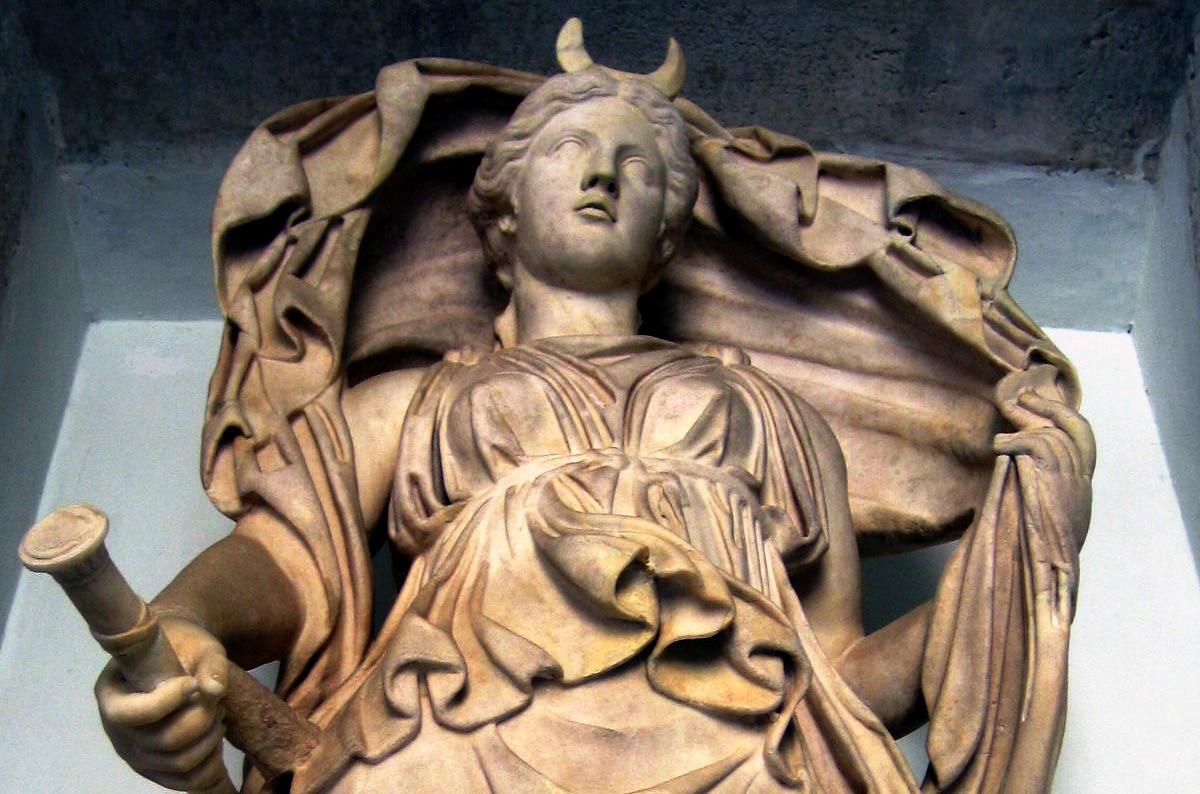
There are many ancient religions that worship various gods that each represent a specific element. In the case of the Greeks, almost all of them lived together on Olympus. Although it is true that there are many deities that are part of this culture, in this article we are going to talk about Selene, the goddess of the moon.
Specifically, we will explain who this deity is and We will tell the myth related to his family origin and also the myth related to his great love: Endimion. I hope you like these legends.
Why is the moon called Selene?

Among the many gods worshiped by the Greeks was Selene, the goddess of the moon. This deity was very important, also for the Romans. This is because, according to Greco-Roman mythology, she was in charge of preventing humanity from remaining in the dark when her brother Helios, the sun, disappeared on the horizon. Hence, in many stories, legends and current cultures, the moon receives the name of Selene.
According to the myth that deals with this deity, the Greek moon goddess was a very beautiful woman with pale skin. He stood out for wearing a crescent-shaped crown. While her brother Helios traveled during the day in his own vehicle, Selene traveled at night. She sometimes rode on a bull, and sometimes she rode in a silver chariot pulled by two winged horses or two white oxen. This last means of transport was the most frequent. As for her clothing, she used to wear white robes and on many occasions she was represented with a torch in her hand.
Since the human being has always been guided through time thanks to the sun and the moon, it is not surprising that the myth of Selene, the moon goddess, have a special influence on the measurement of time. In Greek society, the months were made up of a total of three periods. Each of them comprised ten days that agreed with the different lunar phases. In addition to being the ruler of the night, the Greeks also credited Selene with the power to create dew.
The myth of the origin of Selene, the goddess of the moon
Now that we know a little more about Selene, the goddess of the moon, let's see what is the myth that corresponds to her. Well, according to Greek mythology, this deity was part of the second generation of titans. She was the daughter of Thea and Hyperion. The latter, despite not having many mentions in the various Greek myths, is considered the god of observation. In addition, they used to associate it with the first lights of the day, those that appear just before the sun rises.

On the other hand, the mother of the moon goddess, Thea, was not only Hyperion's wife, but also his sister. This Titaness was the one who ruled over sight. Formerly, the Greeks thought that the eyes launched a kind of rays on things, which allowed us to see them and define them. Apart from this, Tea also fulfilled the function of giving that characteristic shine to precious metals.
It must be said that Selene, as we have already mentioned above, was not an only child. Hyperion and Tea had a total of three children:
- helios: the sun god
- Selena: the goddess of the moon
- eos: the goddess of dawn
According to Greek mythology, Helios was the one who began the journey across the breadth of the sky. When he finished it, darkness came. At that moment it was when he touched Selene, the goddess of the moon. She relieved her brother to make a similar run at night. On the other hand, Eos had to leave his home every day, which was on the edge of the ocean that surrounded the world, to fulfill the mission of announcing the arrival of his brother Helios, the sun god.
selene and love

As many of you already know, the Greeks were very fond of love stories and love affairs between gods. In many myths, they are the main element and very few deities are spared from gossip stories. Selene, the goddess of the moon, is not one of those exceptions. According to Greek mythology, this deity had several lovers, among whom were not only other gods, but also mere mortals.
However, Selene's most remarkable and important love story was lived with a humble mortal shepherd named Endimion. According to legend, the beauty of this man could only be compared to that of Narcissus or Adonis. One night, the shepherd fell asleep and Selene, seeing him, came down with her carriage to take a closer look. The brightness that the beautiful goddess gave off woke up the mortal, who was already in love with her, and she reciprocated her feelings from that precise moment.

However, it was an impossible romance, since she was immortal and he was not. For this reason, Selene went to ask Zeus himself for help, while Endimion went in search of Hypnos, the god of sleep, with the same purpose. Both gods helped the couple, but they could not make Endymion immortal, as they would grant him the status of god. so they decided put him to sleep for all eternity and thus avoid certain death. In order for him to meet his beloved, he could only open his eyes at night. Thus, Selene and Endimion were able to live a beautiful love story, from which a total of fifty children were born, one for each of the fifty lunar phases of the year.
On many occasions, Greek mythology conveys explanations for natural phenomena in a very beautiful way. A good example is the myth of Selene, the goddess of the moon. This legend reflects the way in which the ancient Greeks saw and observed the world.